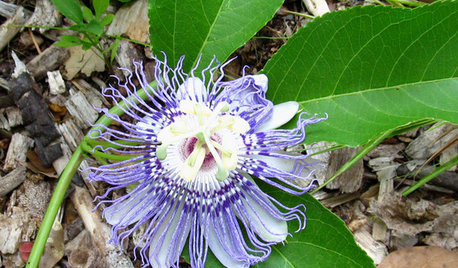Monarchs and Plumeria?
Saw this over at MonarchWatch, and was wondering if anyone has any thoughts. Tdogmom, I know your hub grows plumeria... ever see "large numbers of eggs" on the plants? Of course the below is regarding monarchs in captivity. Outside it may be a different story.
Apologies if this has been discussed before! The study is a few years old so I'm sure it's old news to many. :)
Sandy
MONARCHS WILL LAY EGGS ON PLUMERIA: BUTTERFLY BIRTH CONTROL
by Dr. Scott R. Shaw
I'd like to report an observation about Monarch egg-laying: that Monarchs will lay large numbers of eggs on Plumeria. I noticed this several years ago while trying to raise monarchs in a glasshouse situation. I've not noticed anything about this in the literature, so it might be worth reporting in your newsletter.
Plumeria is a widely cultivated ornamental flower, also known as "frangipani." It originated in Central America, so monarchs should be exposed to it in nature. Plumeria is a member of the Apocynaceae, a plant family very closely related to the milkweeds. [Monarch Watch Note: The taxonomy has recently been revised such that all milkweeds are now classified as belonging to the Apocynaceae. The Asclepiadaceae is no longer considered to be a valid family name.] Monarchs (non-migratory) occur in Costa Rica and use several milkweeds as foodplants, but the Butterflies of Costa Rica does not report Plumeria as a host plant, although they are common plants in that country.
In a glasshouse situation female monarchs were observed to place hundreds of eggs onto Plumeria leaves. Although plenty of milkweeds were present in the room, the volume of eggs placed on Plumeria was comparable. Presumably the plants are closely-related enough to milkweeds that they smell similar to a monarch. But Plumeria is not suitable as a food-plant. It is a complete egg-dump. The eggs hatch successfully, but the young larvae die quickly after biting into the Plumeria leaves. Presumably it smells nice enough to an adult monarch, but is very toxic to the larva.
This might have some interesting implications about monarch migrations. It might partly explain the differential success of migratory monarchs. If non-migratory monarchs in Central America are dumping eggs unsuccessfully on apocynaceous plants, it could be contributing to the much lower populations in those areas where such plants occur. Migratory monarchs moving into temperate North America not only find lots of edible milkweeds, but escape the ranges of deadly plants like Plumeria.
Plumeria is a very common tropical ornamental plant, and has very pleasant and fragrant flowers. But butterfly enthusiasts would be well-advised to not keep it in the same room with monarchs, unless you are seeking to suppress the population.
Dr. Scott R. Shaw
Professor and Curator
U.W. Insect Museum
University of Wyoming
Laramie, Wyoming 82071-3354
Editorial Note: Key to the monarch-Plumeria relationship is whether monarchs will lay eggs on this species in the wild. As Scott suggested in another email, this relationship might make a nice project for a student. Plumeria is relatively easy to grow in a greenhouse but, being of tropical origin, it is not winter hardy. On the other hand, it is widely used as an ornamental in gardens and yards from Florida to South Texas and in southern California. Plumeria is not listed in the literature as an oviposition or a host plant for monarchs although it is known to serve as the host for other danaines such as the Common Crow or Oleander Butterfly, Euploea core
http://linus.socs.uts.edu.au/~don/larvae/nymp/core.html
For more information about Plumeria, please see http://www.io.com/~jrm/plumeria.html
References
DiTommaso, A. and John E. Losey 2003. Oviposition preference and larval performance of monarch butterflies (Danaus plexippus) on two invasive swallow-wort species. Entomologia Experimentalis et Applicata 108:205-209.
Mattila, H. R. and G.W. Otis 2003. A comparison of the host preference of monarch butterflies (Danaus plexippus) for milkweed (Asclepias syriaca) over dog-strangler vine (Vincetoxicum rossicum). Entomologia Experimentalis et Applicata 107: 193-199.





tdogmom
tdogmom
Related Discussions
I have a Monarch!
Q
Late June 2011 pics of my yard (part 1)
Q
Monarchs and plumies
Q
Bill the Monarch likes my plumeria too
Q
sandwhyOriginal Author
karyn1
tdogmom
nolaflutterbys
tdogmom
nolaflutterbys
tdogmom
nolaflutterbys
tdogmom
nolaflutterbys
Darwin's Beagle
socks
KC Clark - Zone 2012-6a OH
Darwin's Beagle
mhunrichs
sultry_jasmine_nights (Florida-9a-ish)
Trudy Fore
Daniel Walsh
Trudy Fore
Greg Poindexter
HU-67698746
HU-468438645
Andrea Reagan